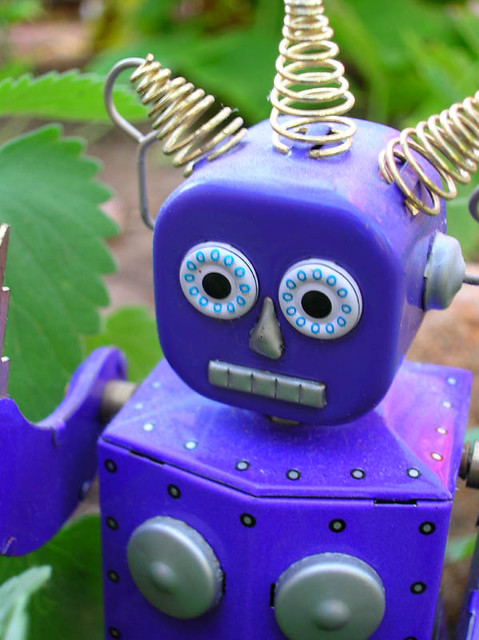
© 2005 Peyri Herrera, Flickr | CC-BY-ND | via Wylio
As regular readers know, I’m a big fan of creating opportunities for students to teach their peers (see The Best Posts On Helping Students Teach Their Classmates — Help Me Find More).
Well, Slate has just published a piece from The Hechinger Report headlined, Pay Attention, Robot, which is about students teaching…robots.
It sounds like ed tech run amok, and it even suggests these teachable robots will be commonplace in the classroom within ten years. It cites some studies that supposedly highlight their effectiveness, but they don’t seem to compare the effectiveness of students teaching robots with, I don’t know, let’s say…students teaching their classmates? And they don’t seem to consider other benefits of people teaching people — like the development of intrinsic motivation (relatedness is a key element of that kind of motivation flourishing) and the refining of “people” skills.
But, disregarding the ridiculousness of these robots in all of our classrooms, the article does an excellent job describing the benefits that students gain by teaching others, and that’s why I’m taking the time to write this post. And that’s the reason I’m adding this post to my previously-mentioned “Best” list.



I know, it sounds stupid. But what may not be very clear from the Slate article is the pedagogical power of this technique. When you create teachable agents, you can program them to help expose the most common misconceptions about specific topics. Needing to identify and correct those misconceptions is something a student teaching another student may – or may not – get to experience. In other ways, this is a bit of a new skin on old techniques: The Betty’s Brain one, for example, is using a modern variance on mind-maps to help students to learn the connections between ideas.
I think this concept has a future – but like all ed tech, they’re tools. They’re no substitute for the input from…you know…real people.